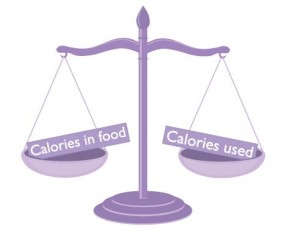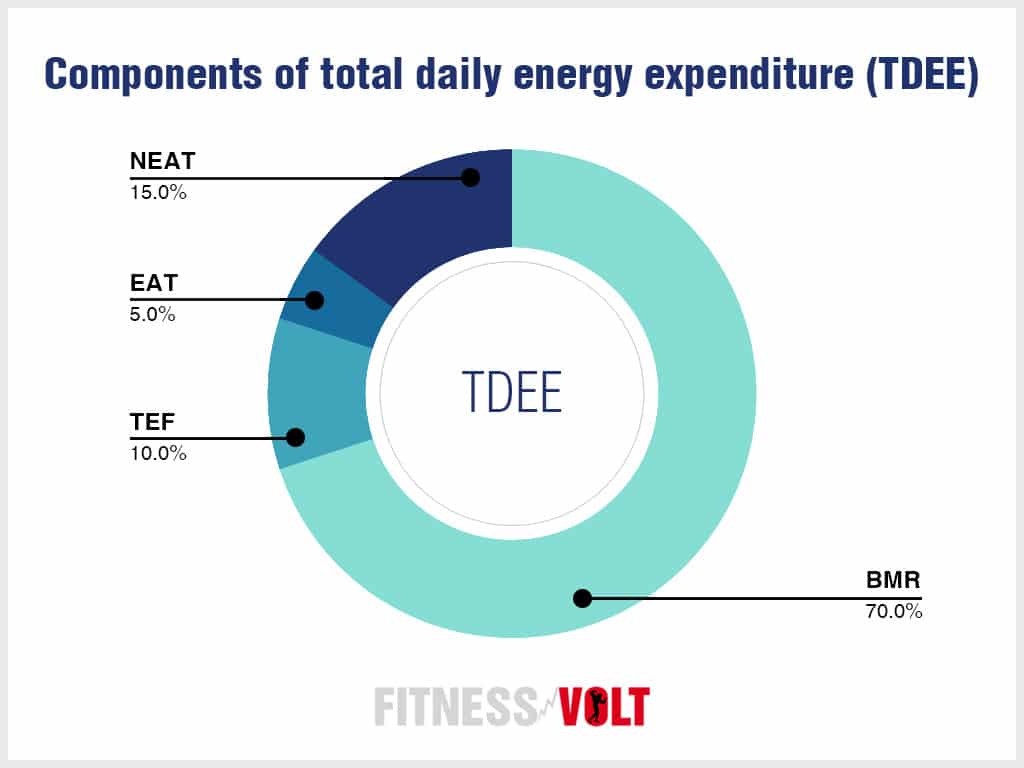Calculating Calories for Your Weight Loss Goal

If you are in need of a healthier version of yourself, you need to know how crucial is to calculate your calories. To calculate calories is one of the important steps when you are making an effective weight loss plan. You should maintain a balance between consuming calories and burning them in order to create a calorie deficit. Calories play a crucial role in weight management. But the question here arises “How to determine the right number of calories to eat each day to achieve your weight loss goal”?
In this guide, we will make you go through the basics of calorie calculation for weight loss, including factors such as your current weight, activity level, and desired rate of achieving weight loss goal.
What are Calories?

Calories are those units of energy found in the food that we consume. Whenever we consume large amount of calories than our body needs to function to utilize those calories in our body. The excess calories are stored as fat in our body which leads to weight gain. On the other hand, if you consume fewer calories than your body needs, it is forced to use stored fat for energy, results in achieving weight loss goal.
What is Calorie Deficit?

Caloric Balance or Caloric Deficit basically means you need to consume fewer calories than your body needs. When your body is in a caloric deficit, it taps into its fat stores for energy, results in achieving weight loss goal.
How does a calorie deficit work?
Calories are either used for work and body functioning, or the excess calories get stored as body fat. If you consume more calories than you utilize, you will surely gain weight no matter what type of diet you follow. The number of calories you need in a day is determined by several factors, such as:
- Age
- Gender
- Weight
- Height
- Physical activity
- Basal metabolic rate
- Underlying health conditions
- Body composition (primarily muscle mass and fat percentage)
How to Calculate Calories for Weight Loss
First of all, tocalculate calories in your body, you need to maintain your body weight and vice-versa. Any calorie calculator considers 2 factors:
- Basal Metabolic Rate (BMR)
- Total Daily Energy Expenditure (TDEE)
1. Basal Metabolic Rate (BMR)

Meaning:
Your basal metabolic rate (BMR) is the number of calories your body needs to function when you are at rest, or in other words, the number of calories your body needs to maintain its basic functions such as breathing, circulating blood, and regulating body temperature.
How to calculate your BMR using the Harris-Benedict equation:
- For men:
BMR = 88.362 + (13.397 x weight in kg) + (4.799 x height in cm) – (5.677 x age in years) - For women:
BMR = 447.593 + (9.247 x weight in kg) + (3.098 x height in cm) – (4.330 x age in years) - For example, if you are a 30-year-old woman who weighs 65 kg and is 165 cm tall, your BMR would be:
BMR = 447.593 + (9.247 x 65) + (3.098 x 165) – (4.330 x 30)
BMR = 447.593 + 600.455 + 511.47 – 129.9
BMR = 1429.618
This means that your body needs approximately 1429.618 calories per day to function at rest.
2. Total Daily Energy Expenditure (TDEE)

Meaning:
Once you have calculated your BMR, the next step is to determine your total daily energy expenditure (TDEE), which is the total number of calories your body needs to function on a daily basis, including physical activity. To calculate your TDEE, you need to multiply your BMR by an activity factor that represents your level of physical activity.
Factors commonly used to calculate TDEE:
- Sedentary (little or no exercise)= BMR x 1.2
- Lightly active (light exercise/sports 1-3 days a week)= BMR x 1.375
- Moderately active (moderate exercise/sports 3-5 days a week)= BMR x 1.55
- Very active (hard exercise/sports 6-7 days a week)= BMR x 1.725
- Extra active (very hard exercise/sports & a physical job)= BMR x 1.9
For example, if you have calculated your BMR to be 1429.618 calories per day and you have a moderately active lifestyle, your total daily energy expenditure (TDEE) could be around 2000-2200 calories per day.
Once you have determined your TDEE, the next step is to set a realistic weight loss goal. It’s important to remember that healthy and sustainable weight loss occurs at a rate of 1-2 pounds per week, as losing weight too quickly can lead to muscle loss, nutrient deficiencies, and other health risks.
To calculate calories that you need to cut from your diet to achieve your weight loss goal, you can use the general guideline that one pound of fat is equivalent to approximately 3,500 calories.
Therefore, to lose one pound per week, you would need to create a calorie deficit of 500 calories per day (3,500 calories divided by 7 days), and to lose two pounds per week, you would need to create a calorie deficit of 1,000 calories per day.
How to Reduce Calorie Intake?
Here are five strategies that may help you lose weight:
1. Eat more protein

To consume protein is very important in cutting off the amount of calorie from your body. It plays a crucial role in losing weight and ultimately reducing calorie. According to some research, high protein snacks help enhance feelings of fullness while decreasing hunger and appetite. Increase your protein intake in the diet to achieve long-lasting weight loss goal.
2. Limit sugary drinks
Another option you can adopt in order to reduce calorie intake is tha reduction in sugar-sweetened beverages, such as sodas, fruit juices, chocolate milk, and other drinks with added sugar. These sugary drinks also increase the risk of obesity which is not a good sign of healthy lifestyle.
3. Drink more water
Adequate amount of drinking water should be maintained in your daily routine. Drinking more water improves brain health and weight management, as well as a reduced kidney stone risk. Also, drinking water immediately before your meal may reduce hunger and make you eat fewer calories.
4. Exercise
Some cardio exercises, such as walking, swimming, or jogging, are helpful both for increasing weight loss and supporting overall health. Exercise has a positive impact on your overall body. It improves your mental health, enhance energy levels, and decrease the risk of diseases.
5. Reduce your intake of refined carbs and ultra-processed foods
“Refined Carbs” basically refers to grains that have lost their bran and germ. Some examples of refined carbs are white bread, pasta, crackers, and white rice. It also includes sugar and other sweeteners. these refined carbs lack fiber which is useful in weight loss.
6. Eat more fruits and vegetables.
Fruits and vegetables are low in calories and high in fiber, which ultimately make them ideal for weight loss. Including more and more fruits and green vegetables in your diet is important in reducing the calorie level. They have high protein amount and less amount of carbs.
Read More: Making Sense of Visions During Meditation
Estimated Daily Calorie Needs Chart for men and women
Here’s an estimated daily calorie needs chart for men and women based on age, assuming a sedentary lifestyle (little or no exercise). You can also calculate calories consumption on basis of this chart.
For Men:
| Age (years) | Estimated Daily Calorie Needs (kcal/day) |
|---|---|
| 18-30 | 2400-2800 |
| 31-50 | 2200-2600 |
| 51+ | 2000-2400 |
For Women:
| Age (years) | Estimated Daily Calorie Needs (kcal/day) |
|---|---|
| 18-30 | 2000-2400 |
| 31-50 | 1800-2200 |
| 51+ | 1600-2000 |
FAQ’S
Q: How important is calorie calculation in weight loss?
A: To calculate calories is crucial for weight loss as it helps you create a calorie deficit, which is essential for shedding excess pounds. By consuming fewer calories than you burn, your body will tap into its stored fat for energy. It will resulting in weight loss.
Q: How can I calculate my daily caloric needs for weight loss?
A: To calculate calories for weight loss, you can use the following formula
Basal Metabolic Rate (BMR) + Physical Activity Level (PAL) – Calorie Deficit = Daily Caloric Intake.
BMR is the number of calories your body needs to function at rest. PAL represents your physical activity level. The calorie deficit is the difference between the number of calories you consume and the number of calories you burn.
Q: How do I determine my Basal Metabolic Rate (BMR)?
A: There are various formulas that can be used to estimate your BMR. For instance, the Harris-Benedict equation or the Mifflin-St Jeor equation are commonly used methods.
These formulas take into account your age, gender, weight, and height. You can find online calculators that use these formulas to determine your BMR.
Q: How much of a calorie deficit should I aim for?
A: The recommended calorie deficit for healthy and sustainable weight loss is generally around 500-1000 calories per day. This can result in a weight loss of 1-2 pounds per week, which is considered a safe and effective rate of weight loss.
Conclusion
Understanding how to calculate calories for your weight loss goal is a fundamental aspect of achieving sustainable weight loss. By following the steps outlined in this guide, you can create a personalized and effective weight loss plan.
You can create a personalized and effective weight loss plan by determining your BMR, factoring in your activity level and monitoring your progress.
It’s important to remember that weight loss is a gradual process. It requires patience, consistency, and a healthy approach to both diet and exercise.
Consulting with a healthcare professional or a registered dietitian can also provide valuable guidance and support on your weight loss journey.
You May Also like:



